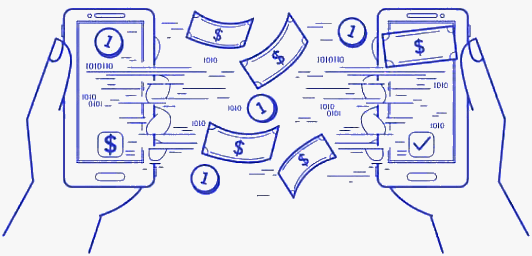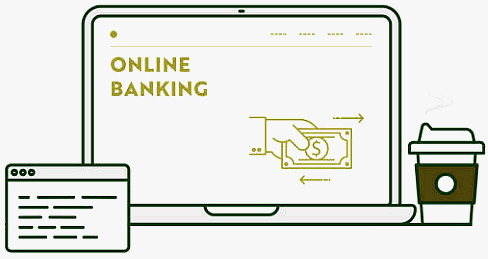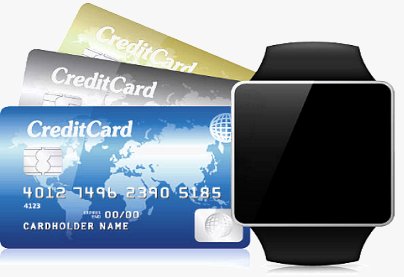Accredited InvestorsAltcoinAnatoli UnitskyAnti-Money Laundering (AML) In CryptoAPIArbitrageArtCoin TokenArticle DirectoryASICAuction Terminology GlossaryBasics of Stock Market InvestingBear MarketBest Crypto Payment Provider In the WorldBitcoinBlockchainBlockchain ConfirmationBlockchain Consensus MechanismBlockchain ForkBlockchain GlossaryBored Ape Yacht ClubBuild a Business That OutperformsBull MarketBuying SkyWay SharesByzantine Fault Tolerance (BFT) ExplainedCasascius CoinCentral Bank Digital Currency (CBDC)Centralized Crypto ExchangeCoinCoinsetCold WalletCollateralCommodity Futures Trading Commission (CFTC)Cross-Chain TechnologyCRUCrypto ExchangeCrypto GlossaryCrypto JokesCrypto Terms to KnowCrypto TickerCryptocurrencyCryptographyCryptojackingCryptounit BlockchainCryptounit GlossaryCryptounit ProgramdApp (Decentralized Application)Dead CoinDecentralized Exchange (DEX)Decentralized Finance (DeFi)Difference Between Bitcoin and EthereumDifferent Ways of Investing MoneyDigital CurrencyDistributed LedgerDo Your Own Research (DYOR)Dollar Cost Averaging (DCA)Dow Jones Industrial Average (DJIA)EncryptionERC-20ERC-721EthereumEvoScentFear Of Missing Out (FOMO)Fear, Uncertainty and Doubt (FUD)Fiat MoneyFNT Fintech CompanyGenesis BlockGlobal Unit PayGlossary of Banking TermsGlossary of Business TermsGlossary of Financial TermsHalvingHODLHot WalletHow Do I Start InvestingHow Rich is Satoshi Nakamoto?How to Create a BlockchainHow to Find Private InvestorsHow to Get Into FintechHow to Program Smart ContractsI Am Thrilled to Be a Part of This Global ProjectInitial Coin Offering (ICO)Initial Public Offering (IPO)Initial Token Offering (ITO)Innovation Basalt TechnologyInnovative Transportation TechnologiesInternational Bank Account Number (IBAN)Investing in Gold Mining StocksInvesting in Gold MiningJagerJoy of Missing Out (JOMO)Know Your Customer (KYC)LedgerLiquidity in CryptocurrencyMaker and Taker Fees in Crypto TradingMarket Capitalization (Market Cap)Meme CoinMetal Credit CardMetaMaskMillenials Now Have Access to Generational WealthMy Best Investment EverNew Digital EvolutionNFT GlossaryOff-Chain TransactionsOn-Chain TransactionsOpen Edition NFTPeer-to-Peer (P2P)Personal Loan GlossaryProbably the Best STO on the MarketProof of Stake (PoS)Real Estate Glossary of TermsReal Estate Investing GlossaryRebase TokenSecurities and Exchange Commission (SEC)Security Token ExchangesSecurity Token Offering (STO)Soulbound Decentralized Identities for Security TokensSoulbound ID Launch by Stobox Proves a SuccessSoulbound TokensStoboxStock Market GlossaryTestimonialsTether Platform and Token (USDT)UnitEx ExchangeUnitsky String TechnologiesUNTBUSDUValidatorWe Started Investing When We Were 25What are Blue Chip NFT?What are Blue Chip Stocks?What are Crypto Assets?What are Crypto Smart Contracts?What are CryptoPunks NFT?What are Digital Assets?What are Digital Collectibles?What are Gas Fees?What are Gas Wars?What are Hashmasks?What are Non Fungible Tokens?What are Non-Sufficient Funds (NSF)?What are Soulbound Tokens (SBT)?What are Stablecoins in Crypto?What are Transactions Per Second (TPS)?What are Utility NFTs?What are Utility Tokens?What Does Burning Crypto Mean?What Does Diamond Hands Mean?What Does Paper Hands Mean?What Does To The Moon Mean?What Does WAGMI Mean?What Happened to Satoshi Nakamoto?What is a 51% Attack?What is a Baby Boomer?What is a Backlink?What is a Banner?What is a Barcode?What is a Bid-Ask Spread in Crypto?What is a Block in Blockchain?What is a Block Reward?What is a Blockchain Address?What is a Blockchain Node?What is a Blockchain Oracle?What is a Blog?What is a Bond?What is a Bot?What is a Broker?What is a Business Accelerator?What is a Cash Cow?What is a Commercial Bank?What is a Commodity?What is a Con?What is a Credit?What is a Credit Limit?What is a Credit Rating?What is a Crypto Airdrop?What is a Crypto Bridge?What is a Crypto Scam?What is a Crypto Token?What is a Crypto Wallet?What is a Crypto Whale?What is a Crypto Winter?What is a Cryptocurrency Public Ledger?What is a Cryptocurrency Roadmap?What is a DAO?What is a Dark Pool?What is a Day Trader?What is a Dead Cat Bounce?What is a Default?What is a Derivative?What is a Digital Credit Card?What is a Fiscal Quarter?What is a Fungible Token?What is a Governance Token?What is a Grace Period?What is a Hard Fork?What is a Hot Wallet?What is a Hybrid Blockchain?What is a Hybrid PoW/PoS?What is a Joint Account?What is a Market Cap?What is a Merkle Tree in Blockchain?What is a Mining Farm?What is a Nonce? What is a PFP NFT?What is a POS System?What is a Prepaid Card?What is a Private Blockchain?What is a Private Key?What is a Public Blockchain?What is a Public Key?What is a Reserve Currency?What is a Ring Signature?What is a Routing Number?What is a Rug Pull in Crypto?What is a Safe Deposit Box?What is a Satoshi?What is a Security Token?What is a Seed Phrase?What is a Shitcoin?What is a Sidechain?What is a Soft Fork?What is a Spot Market?What is a State Bank?What is a SWIFT Code?What is a Tax Identification Number (TIN)?What is a Time Deposit?What is a Transaction Account?What is a Variable Interest Rate?What is a Virtual Assistant (VA)?What is a Virtual Card?What is a Virtual Currency?What is a Visa Card?What is a Whitelist in Crypto?What is a Whitepaper?What is Accounts Payable (AP)?What is AMA in Crypto?What is Amortization?What is an Accrual?What is an ACH Transfer?What is an Actuary?What is an Addendum?What is an Algorithm?What is an Angel Investor?What is an Annuity?What is an Asset?What is an ATM?What is an Atomic Swap?What is an Audit?What is an Avatar?What is an EIN?What is an Embargo?What is an Entrepreneur?What is an IDO (Initial Dex Offering)?What is an Interest Rate?What is an Internet cookie?What is an Investment Bank?What is an NFT Drop?What is an NFT Floor Price?What is an Ommer Block?What is an Orphan Block?What is an Outstanding Check?What is an Overdraft?What is Artificial Intelligence (AI)?What is B2B (Business-to-Business)?What is B2G (Business-to-Government)?What is Bartering?What is Bitcoin Dominance?What is Bitcoin Pizza Day?What is Blockchain Immutability?What is Blockchain Used For?What is BRICS?What is Business-to-Consumer (B2C)?What is C2C (Customer to Customer)?What is Capitalism?What is Catfishing?What is CFD Trading?What is Check Kiting?What is Cloud Mining?What is Communism?What is Content Marketing?What is Decentralization in Blockchain?What is DeFi in Crypto?What is Delisting?What is Depreciation?What is Digital Marketing?What is Diversification?What is Double Spending?What is Dumb Money?What is Dumping?What is Earnings Per Share (EPS)?What is Economics?What is Email Marketing?What is Equity?What is Etherscan?What is Fintech?What is Foreign currency?What is Forex?What is Fundamental Analysis (FA)?What is GameFi?What is Generative Art NFT?What is Gwei?What is Hard Currency?What is Hash Rate?What is Hashing in Blockchain?What is Inflation?What is Initial Game Offering (IGO)?What is Interest?What is Interest Income?What is Mainnet?What is Mastercard?What is Metaverse in Crypto?What is Mining in Cryptocurrency?What is Minting NFT?What is Mobile Banking?What is Money Laundering?What is NFT Alpha?What is NFT Metadata?What is NFT Rarity?What is NGMI Meaning?What is Nominal Interest Rate?What is Online Banking?What is Open-End Credit?What is OpenSea NFT Marketplace?What is Personal Identification Number (PIN)?What is Play-to-Earn?What is Polygon?What is Proof of Authority (PoA)?What is Proof of Work (PoW)?What is Public Key Cryptography?What is Pump and Dump?What is Quantum Computing?What is Refinancing?What is Retail Banking?What is Ripple?What is Sharding?What is Slippage in Crypto?What is Smart Money?What is Solvency?What is Soulbound ID?What is SSL?What is Staking in Cryptocurrency?What is Technical Analysis (TA)?What is Testnet?What is the Ask Price?What is the Better Business Bureau (BBB)?What is the Bid Price?What is the Dark Web?What is the InterPlanetary File System (IPFS)?What is the Gold Standard?What is the Lightning Network?What is the Prime Rate?What is the Sandbox?What is the Secondary Market?What is the World Bank?What is Tier 1 Capital?What is Tokenomics?What is TRC-20?What is Universal Banking?What is Unspent Transaction Output (UTXO)?What is Usury?What is Volatility in Crypto?What is Wash Trading?What is Web3?What is Whisper?What is XRP?What is Zero-Knowledge Proof (ZKP)?Who is Beeple?Who is Satoshi Nakamoto?Who is Vitalik Buterin?Why Tokenization is a Safe HavenWhy You Should Try Your Hand at Trading
What is Mobile Banking?
- Home
- Glossary of Banking Terms
- What is Mobile Banking?
The digitalization of the 21st century has been a significant breakthrough, and the banking industry has been revolutionized by mobile banking.

With everything happening at one's fingertips on mobile devices, waiting for transactions is no longer necessary. Mobile banking is a revolutionary change that has eliminated the long queues at banks and made transactions faster and more secure through technological upgrades.
What is Mobile Banking?
Mobile banking has become increasingly popular over the years, allowing customers to access banking services using their mobile devices.
Mobile banking is a service provided by banks and other financial institutions that allows customers to access their account information, make transactions, and perform other banking functions through their mobile devices, such as smartphones or tablets. With mobile banking, customers can carry out a range of tasks, such as checking their account balance, transferring money between accounts, paying bills, and depositing checks, all from the convenience of their mobile devices.
To use mobile banking, customers typically need to download a mobile banking app provided by their bank or financial institution. The app is usually available for free on the Apple App Store or Google Play Store, and customers can log in using their existing online banking credentials. Once logged in, customers can access their accounts and perform various banking functions.
Mobile banking works by utilizing the internet and mobile networks to connect customers to their bank's servers, allowing them to access their accounts and perform transactions. Mobile banking apps use secure encryption to protect customer data, ensuring that their financial information is kept safe and secure.
One of the biggest benefits of mobile banking is its convenience. Customers no longer need to visit a physical bank branch to perform basic banking functions. With mobile banking, they can carry out banking tasks from anywhere and at any time, as long as they have an internet connection. This can be especially helpful for those who have busy schedules or who live far away from a bank branch.
Another advantage of mobile banking is that it can be faster and more efficient than traditional banking methods. With mobile banking, customers can quickly check their account balances, transfer money, or pay bills without the need to fill out paperwork or wait in long lines.
Mobile banking also provides a higher level of control and visibility over one's finances. Customers can easily monitor their account activity and receive notifications for account transactions, helping them stay on top of their finances and prevent fraud.
The Evolution of Mobile Banking: A Brief History
Mobile banking has come a long way since its inception. Before the introduction of mobile web services in 1999, mobile banking was primarily done through messages or SMS, known as SMS banking.
Before 2010, SMS banking and mobile web were the most popular mobile financial products. With the advent of smartphones running on iOS or Android operating systems, mobile banking apps started to evolve. Customers could download banking apps onto their smartphones, with more advanced features and improved transactional capabilities.
Today, many financial institutions continue to use both SMS and mobile apps to keep their clients informed about their account activities or send alerts regarding potential fraud and service updates. For example, a bank may send a text message to notify clients that their ATMs or apps will not be available during a specific period due to system maintenance. Or, a bank may send a confirmation message to the client regarding a transaction done through the mobile app.
The Importance of Cybersecurity in Mobile Banking
In today's digital age, cybersecurity has become a crucial aspect of mobile banking operations. Cybersecurity measures are designed to protect electronic information from theft or damage, ensuring that data is not misused. This ranges from personal information to complex government systems.
There are three main types of cyber attacks that can occur in mobile banking:
- Backdoor attacks, where cybercriminals exploit alternative methods to access a system that do not require usual authentication. Some systems have backdoors intentionally built in, while others are a result of error.
- Denial-of-service attacks, which prevent authorized users from accessing the system. For example, cybercriminals may repeatedly enter incorrect login credentials until the account is locked.
- Direct-access attacks, which involve bugs and viruses that gain access to a system and either copy or modify its information.
To protect their clients from cyber attacks, financial advisors can take various steps. One such step is educating clients on the importance of creating strong and unique passwords, avoiding the use of the same password for all password-protected sites, and using a password manager like Valt or LastPass to add an extra layer of security. Additionally, financial advisors should never access client data from public locations and ensure that all connections are private and secure.
Related Articles

What is an ACH Transfer?
The sender can then submit the transaction through their bank's online banking portal, a mobile app, or by contacting their bank directly.

What is Online Banking?
With online banking, you can perform a variety of transactions, such as checking your account balance, paying bills, transferring funds, and even applying for loans or opening new accounts, all through a web portal or a mobile app provided by your bank.

What is Fintech?
Fintech has a broad range of applications, from mobile banking and insurance to cryptocurrency and investment apps.
- Home
- Glossary of Banking Terms
- What is Mobile Banking?